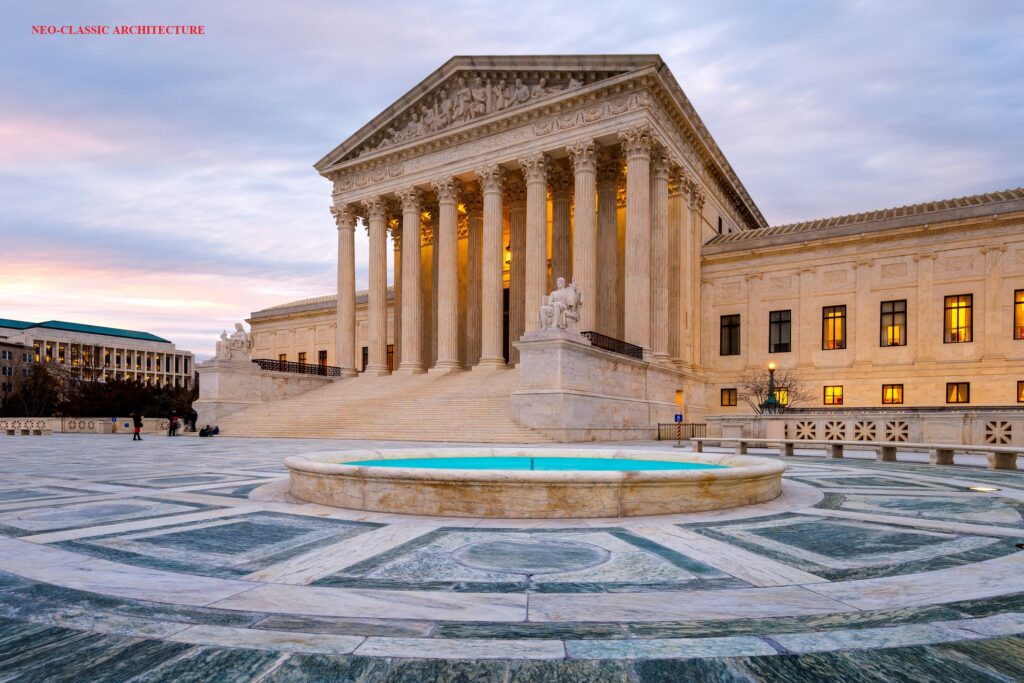Neoclassical Architecture, revival of Classical architecture during the 18th and early 19th centuries. The movement concerned itself with the logic of entire Classical volumes, unlike Classical revivalism (see Greek Revival), which tended to reuse Classical parts. Neoclassical architecture is characterized by grandeur of scale, simplicity of geometric forms, Greek—especially Doric (see order)—or Roman detail, dramatic use of columns, and a preference for blank walls. The new taste for antique simplicity represented a general reaction to the excesses of the Rococo style. Neoclassicism thrived in the United States and Europe, with examples occurring in almost every major city. Russia’s Catherine II transformed St. Petersburg into an unparalleled collection of Neoclassical buildings as advanced as any contemporary French and English work. By 1800 nearly all new British architecture reflected the Neoclassical spirit (see Robert Adam; John Soane). France’s boldest innovator was Claude-Nicolas Ledoux, who had a central role in the evolution of Neoclassical architecture. In the United States Neoclassicism continued to flourish throughout the 19th century, as many architects looked to make the analogy between the young country and imperial Rome when designing major government buildings. The style also spread to colonial Latin America.
NEO-CLASSIC ARCHITECTURE

